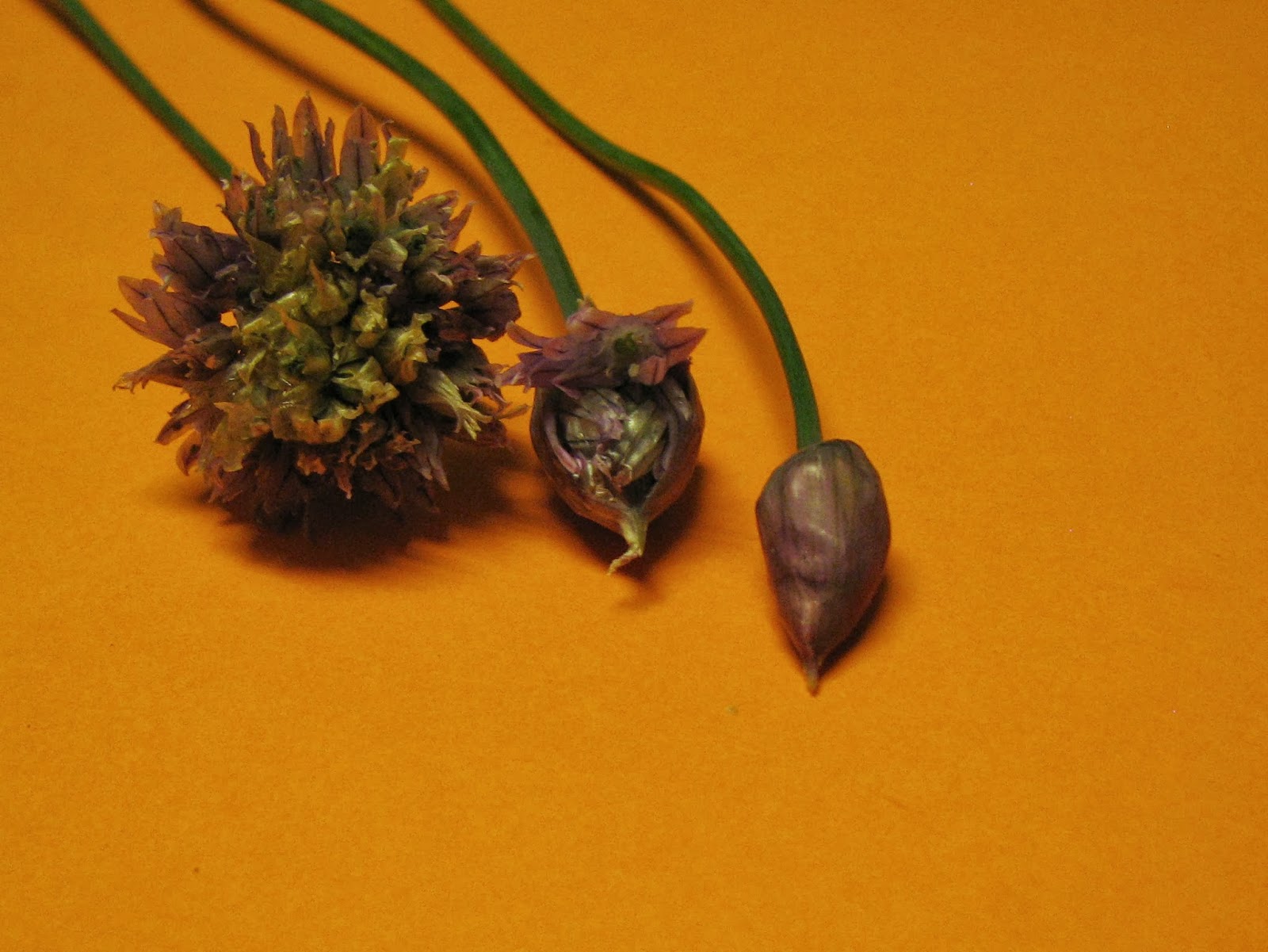What else can you do with chives besides using them as a healthy, nutrient rich and flavorful potato topping?
My favorite use for chives is adding young, tender blossoms to salads. I have found several new blooms on my spring blooming chives this fall, giving me the inspiration to write about chives. Chive blossoms deliver onion flavor without all the messy chopping, or adding extra water to a salad. Pick off the chive petal blossoms one by one to separate them.
 |
| Purple Chive Blossoms Picked This September Morning. |
My grandmother used to give me a delicious meal of home made cottage cheese topped with chopped chives. I have never been able to match the fresh taste using store bought cottage cheese.
Garlic chives have white blossoms and bloom in the fall instead of spring; planting both spring blooming purple chives and fall blooming garlic chives give you fresh blooms and stems spring and fall. Garlic chives are very popular in Chinese cooking, they add just a hint of garlic. Garlic chives have flat stems, while common purple blossom chives have a round hollow stem.
Chives keep their flavor best when added raw onto foods. Chopped garlic chives will also wilt nicely when added to your favorite stir fry. Young flower buds of the garlic chive are very tender when picked before the blooms open. I can't wait to add garlic chives to the garden this year!
Permaculture gardens benefit several ways from chives. Chives can be used as an insecticide for organic gardening. Chive tea can be sprayed directly on gooseberries and cucumbers to prevent powdery mildew, on cabbages to repel cabbage butterfly, and on apple trees to help get rid of apple scab. Plant chives near carrots to discourage the carrot fly, and in rose beds to combat black spot.
Chives help suppress grass, accumulate nutrients, and attract beneficial insects to the garden with spring and fall blooms. Chive attracts bees- spring and fall!
You can grow common purple chives indoors during the winter, give them as much sun as possible and supplement with grow lights if available. Chives can last well into the winter but are tough after blooming.
Chives grow wonderfully in all kinds of pots, use your imagination and make some interesting displays. Keep chives trimmed after blooming to keep them from becoming long and drooping.
September Purple Chive Blossoms. These didn't last long!
Healthy Chives: Chives combine to make allicin, which is linked to lowering cholesterol, lowering blood pressure. Some research shows allicin can help prevent certain types of cancer.
Many use flavorful raw chopped chives as a salt replacement.
Minerals in chives include calcium, copper, iron, magnesium, manganese, phosphorous, potassium, selenium and zinc. Chives are a source of folic acid, and vitamins A, B6, C and K.
Chives are easy to grow and maintain. Add both common purple and garlic chives to your garden for color, companion planting and natural garden benefits, and healthy flavorful recipes.
Check out this Chinese cookbook by Susanna Foo: Chinese Cuisine: The Fabulous Flavors and Innovative Recipes of North America's Finest Chinese Cook. Houghton Mifflin NY, 1995, 2002.

No comments:
Post a Comment